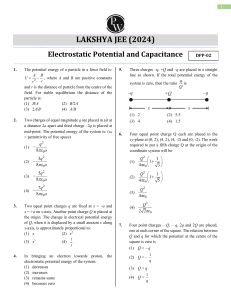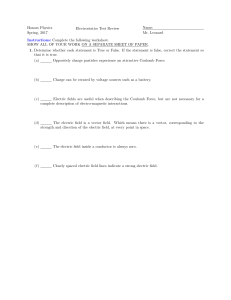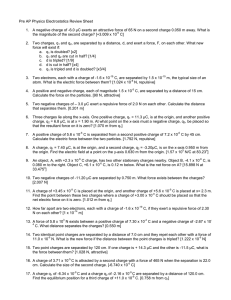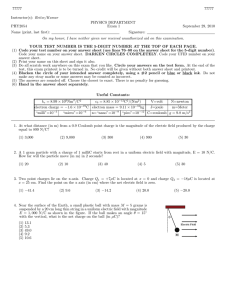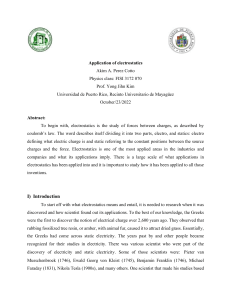Physics 221 Group Project Force, Electric Field, Potential Energy
advertisement
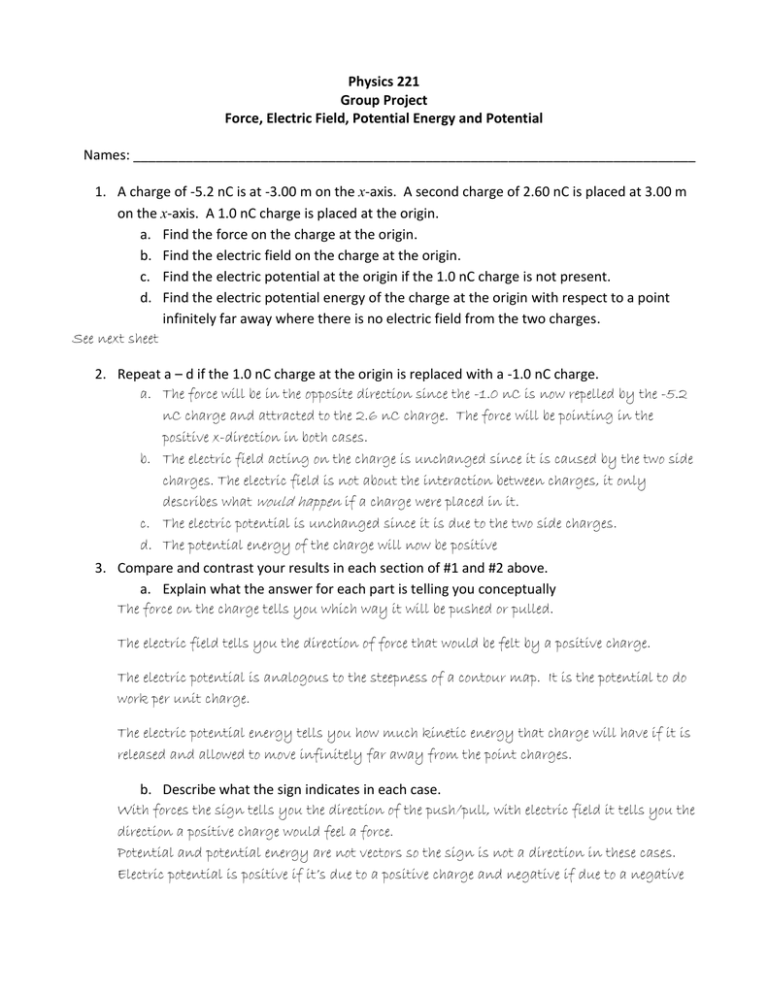
Physics 221 Group Project Force, Electric Field, Potential Energy and Potential Names: ___________________________________________________________________________ 1. A charge of -5.2 nC is at -3.00 m on the x-axis. A second charge of 2.60 nC is placed at 3.00 m on the x-axis. A 1.0 nC charge is placed at the origin. a. Find the force on the charge at the origin. b. Find the electric field on the charge at the origin. c. Find the electric potential at the origin if the 1.0 nC charge is not present. d. Find the electric potential energy of the charge at the origin with respect to a point infinitely far away where there is no electric field from the two charges. See next sheet 2. Repeat a – d if the 1.0 nC charge at the origin is replaced with a -1.0 nC charge. a. The force will be in the opposite direction since the -1.0 nC is now repelled by the -5.2 nC charge and attracted to the 2.6 nC charge. The force will be pointing in the positive x-direction in both cases. b. The electric field acting on the charge is unchanged since it is caused by the two side charges. The electric field is not about the interaction between charges, it only describes what would happen if a charge were placed in it. c. The electric potential is unchanged since it is due to the two side charges. d. The potential energy of the charge will now be positive 3. Compare and contrast your results in each section of #1 and #2 above. a. Explain what the answer for each part is telling you conceptually The force on the charge tells you which way it will be pushed or pulled. The electric field tells you the direction of force that would be felt by a positive charge. The electric potential is analogous to the steepness of a contour map. It is the potential to do work per unit charge. The electric potential energy tells you how much kinetic energy that charge will have if it is released and allowed to move infinitely far away from the point charges. b. Describe what the sign indicates in each case. With forces the sign tells you the direction of the push/pull, with electric field it tells you the direction a positive charge would feel a force. Potential and potential energy are not vectors so the sign is not a direction in these cases. Electric potential is positive if it’s due to a positive charge and negative if due to a negative charge. Potential energy is positive if the charge will accelerate away when released (like a compressed spring) and negative if it will move closer when released (like a stretched spring). c. Explain why the answer is the same or different for each part when the sign of the charge at the origin is changed (#1 compared to #2). In electrostatics everything is reversed when talking about a negative charge compared to a positive charge. This is because opposites attract and likes repel .


